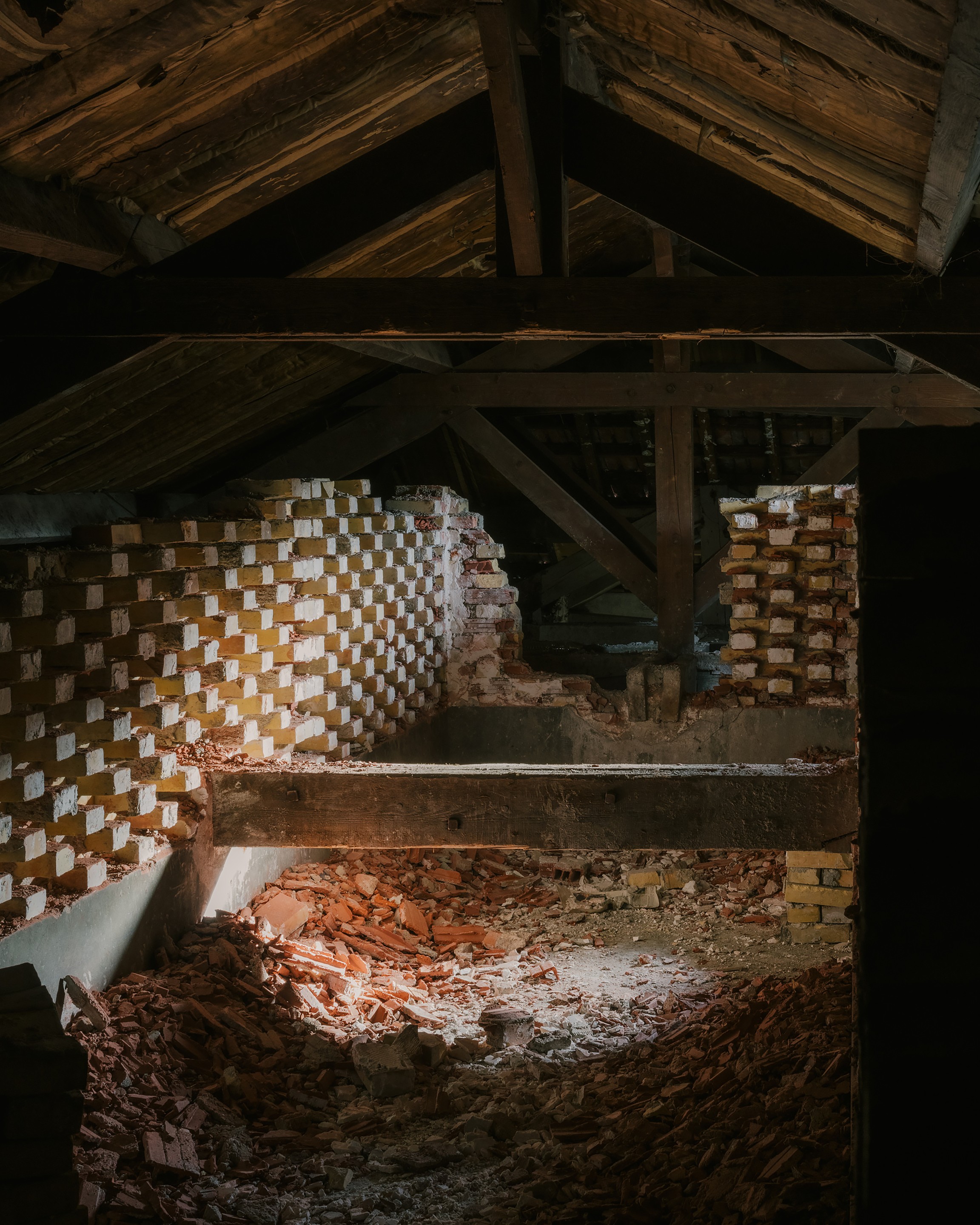The Pinard super-facility, which transforms a decommissioned maternity hospital into a hybrid facility hosting a pre-school, elementary school and workspaces, is one of the projects chosen to illustrate this way of making the city from the existing, and responding to contemporary issues of environment, heritage and programming.
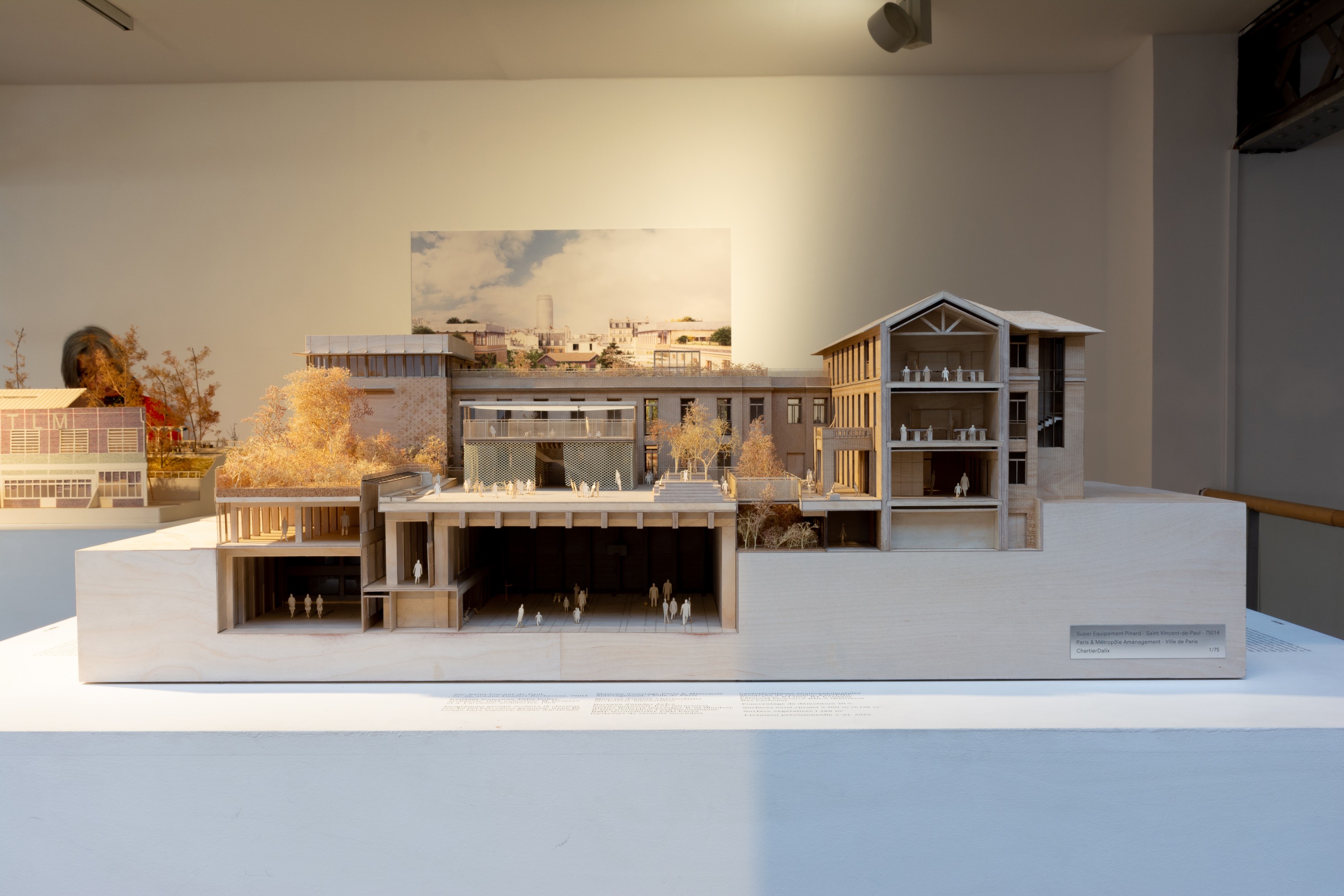
The former Saint-Vincent-de-Paul hospital is located in the 14th arrondissement of Paris. Within this 3.4 hectare site, the Adolphe Pinard building (1934) is one of the first modern maternities in Paris. It has seen the birth of nearly 400,000 Parisians during its 72 years of activity. Its architectural style featuring various blond brick moldings links it to the regionalist style in vogue between the wars. The use of accessible concrete roof terraces, large, naturally lit stairwells and load-bearing facades, which free the interior floors from intermediate load-bearing points across its 8m width, inscribe this building in the modernist lineage The entire building is organized in a U-shape around an inner courtyard. The courtyard was modified in the 1970s, with the construction of a fourth wing, closing the original composition, along with the creation of a two-story underground parking lot beneath the courtyard.

The historic hospital complex of Saint Vincent de Paul is emblematic of the potential of adaptive reuse. The site is now undergoing a unique metamorphosis in Paris in terms of its development strategy and environmental innovation. The transformation of the old maternity ward into a “super facility” for the neighborhood is an opportunity to rethink this place so that it bears witness to its history, and to develop a new project that allows for a diversity of users.
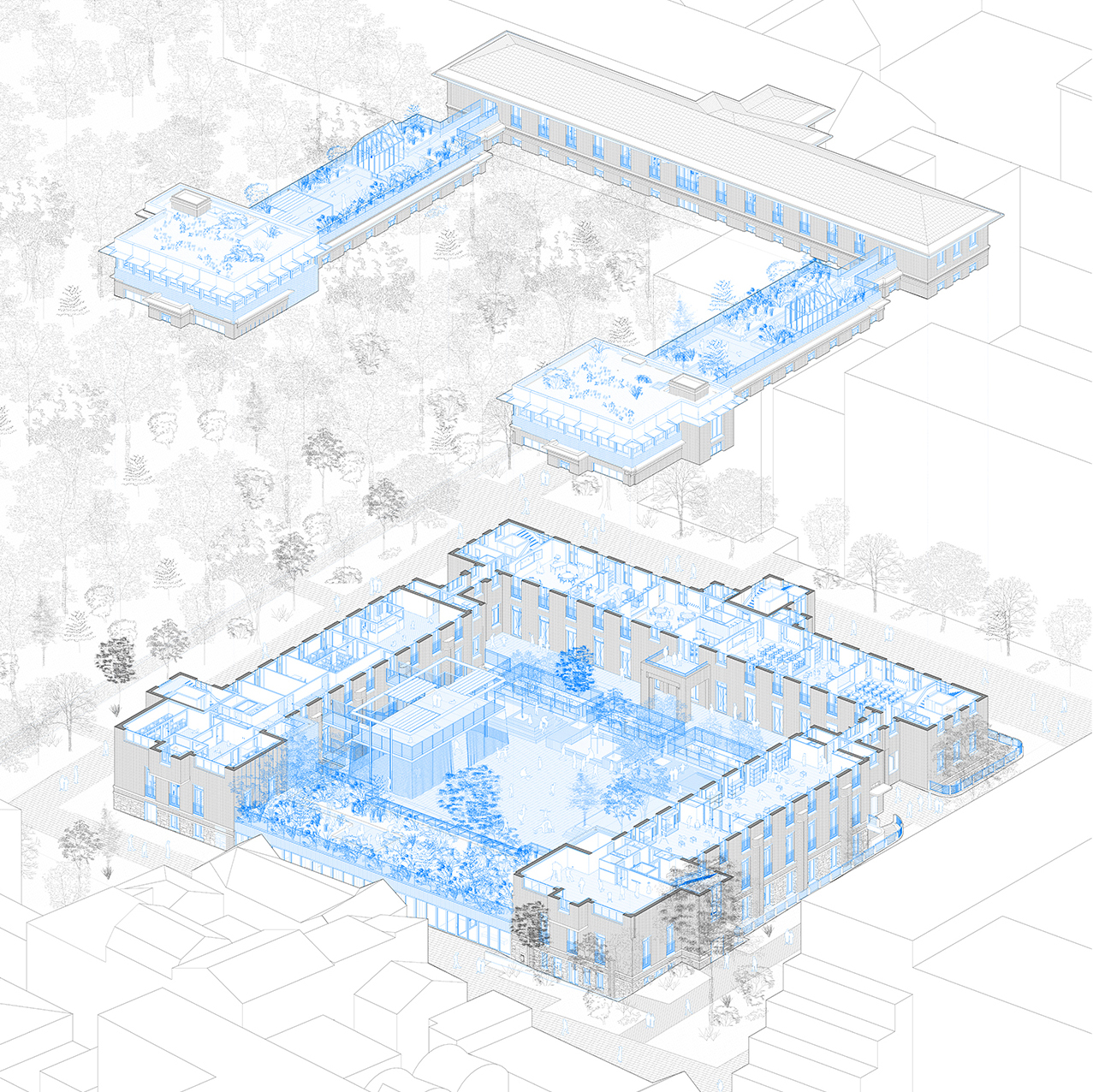
By bringing together an elementary school, pre-school, gymnasium, community spaces and workspaces, this multi-programming provides a new model of public facility that encourages plurality. We seek to encourage the collective by the versatility and the flexibility of the spaces throughout the day. Outside of school hours, the school library is made available to the community, the playground, the courtyard and the refectory are open to the public and almost the entire ground floor can be used to accommodate an open-air cinema or a book fair.
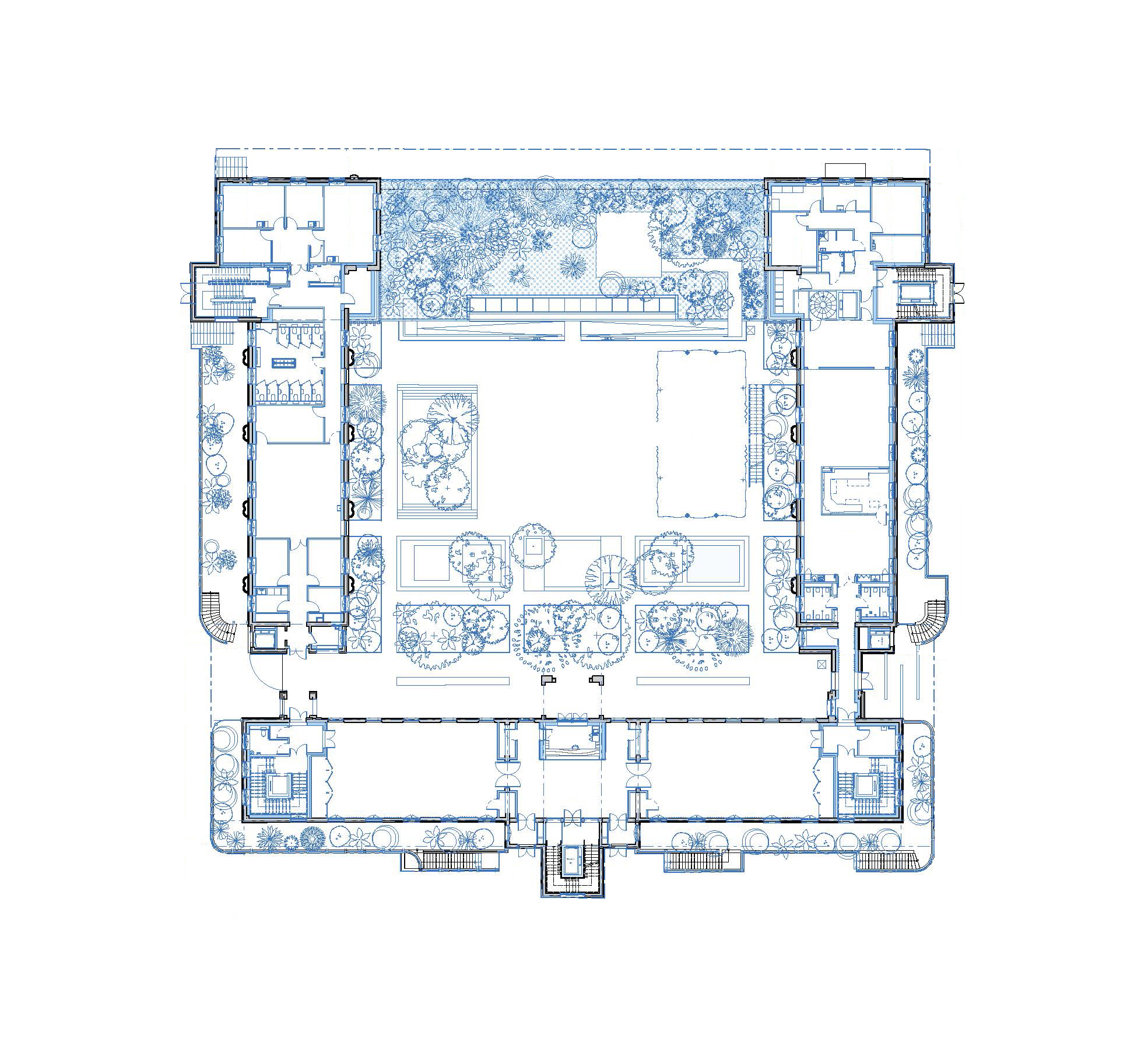
The morphology of the existing building, and in particular its narrow width, is an opportunity to rethink the teaching spaces. The classrooms all have double exposures as well as an "extra room" which allows new educational pedagogies to be encouraged. Emphasizing inter-class learning, stimulating artistic and creative activities, encouraging the autonomy of the children and the care of the younger children by the older ones, are all ambitions that do not usually find their place in the standard school spaces.
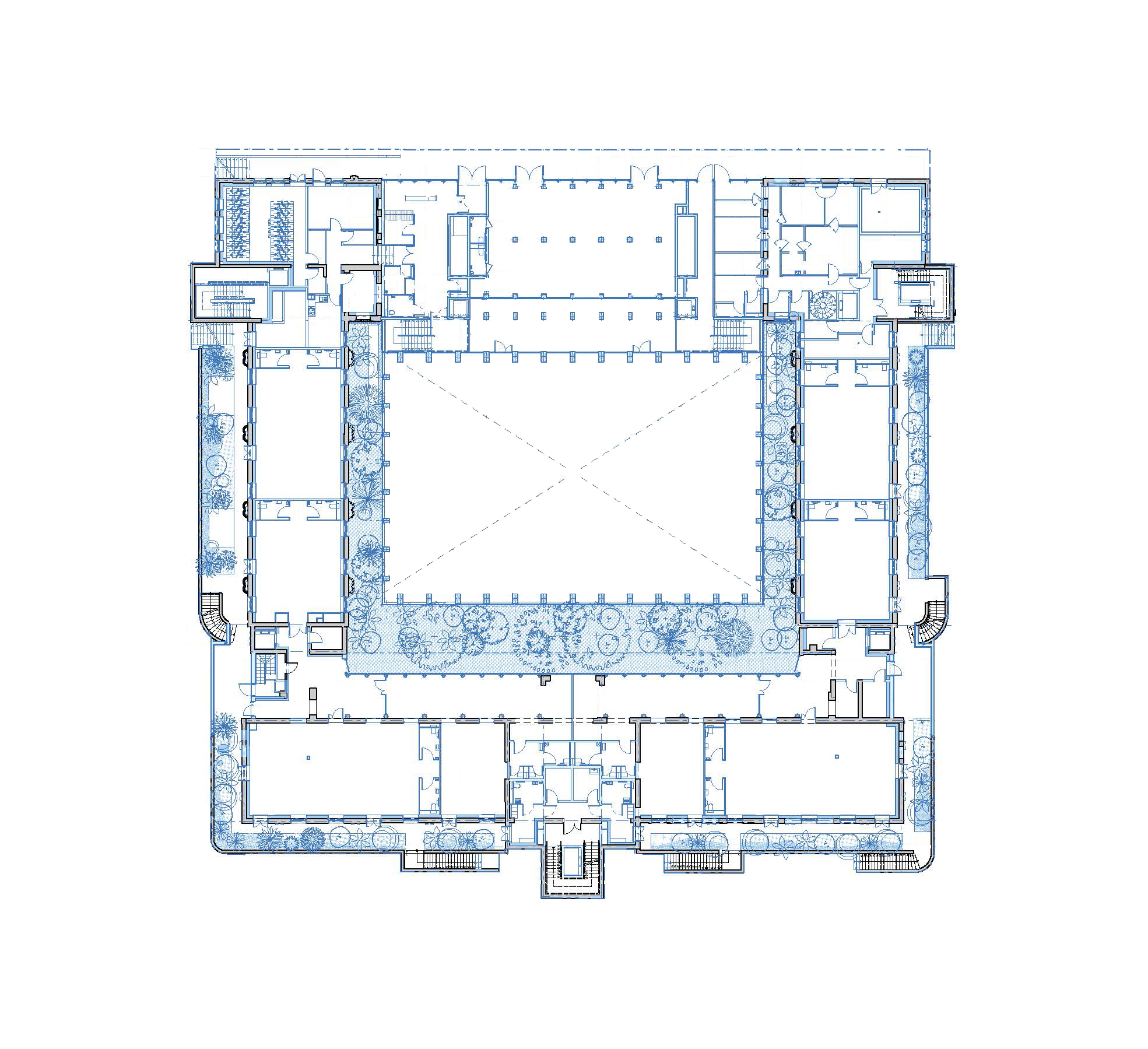
The structure of the wing added in 1969 did not allow it to be reconverted into a school program, its demolition also made it possible to reopen the building complex to its surroundings, revealing its original configuration. On its footprint, a hanging garden unfolds: a place of observation and experimentation for schoolchildren, local residents and associations alike, it constitutes a major educational tool and illustrates the link we believe to be fundamental between people, nature and culture.
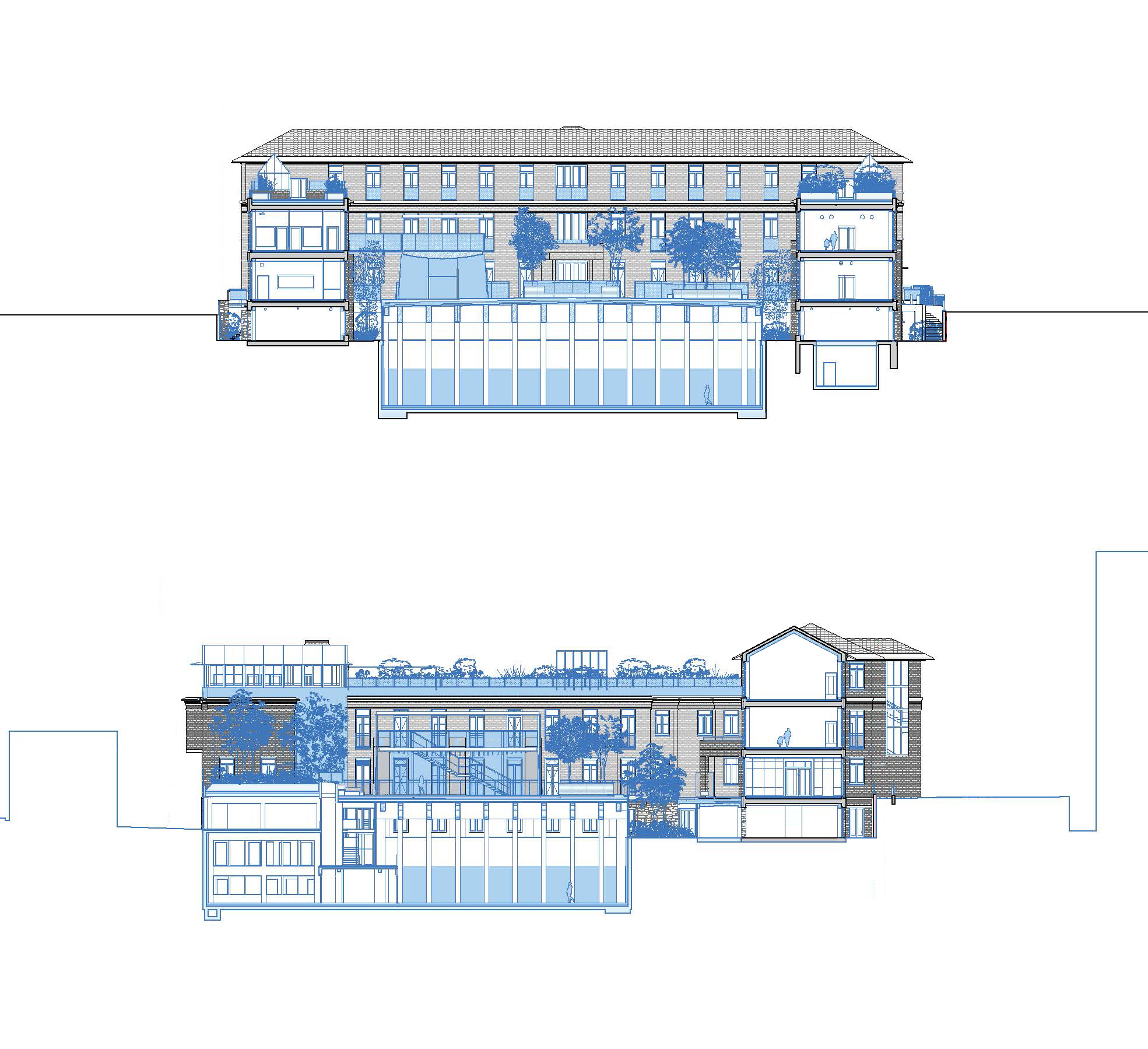
Re-use is an integral part of the project, and as soon as existing elements are removed, they are diagnosed so that they can be re-used. As a result, 42.5% of the total mass of materials used in new buildings is derived from recycling, reuse or reemployment.
Major examples of reuse in the project are:
- Terra cotta tiles laid on edge as a floor treatment in the lightwells,
- Re-used bricks (in-situ and ex-situ) for the creation of rooftop parapets and courtyard flooring,
- Steel profiles of the pergola for the creation of the two rooftop greenhouses,
- Wooden window frames and existing joinery for the creation of wood parquet flooring and furniture,
- Wooden roof frames transformed into a dropped ceiling with wooden slats in the school's multipurpose spaces,
- Re-used interior finishes (mirror, ceramic shelf, radiator, washbasin, light fittings).
The project includes 398 tons of re-used materials and 3,935 tons of recycled materials, saving 357,000 Kg CO² eq.

